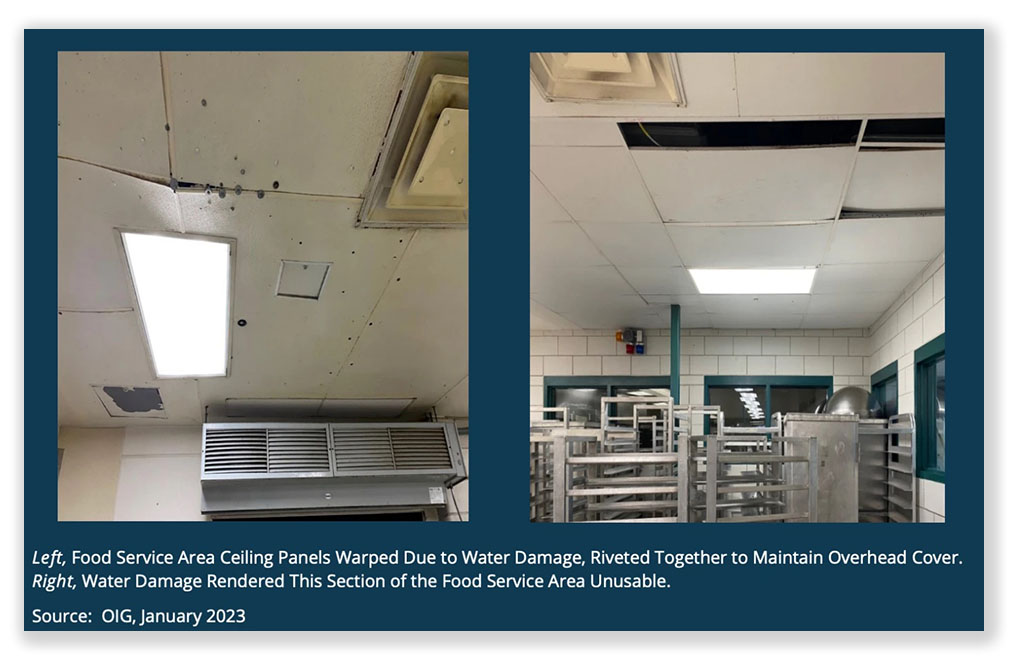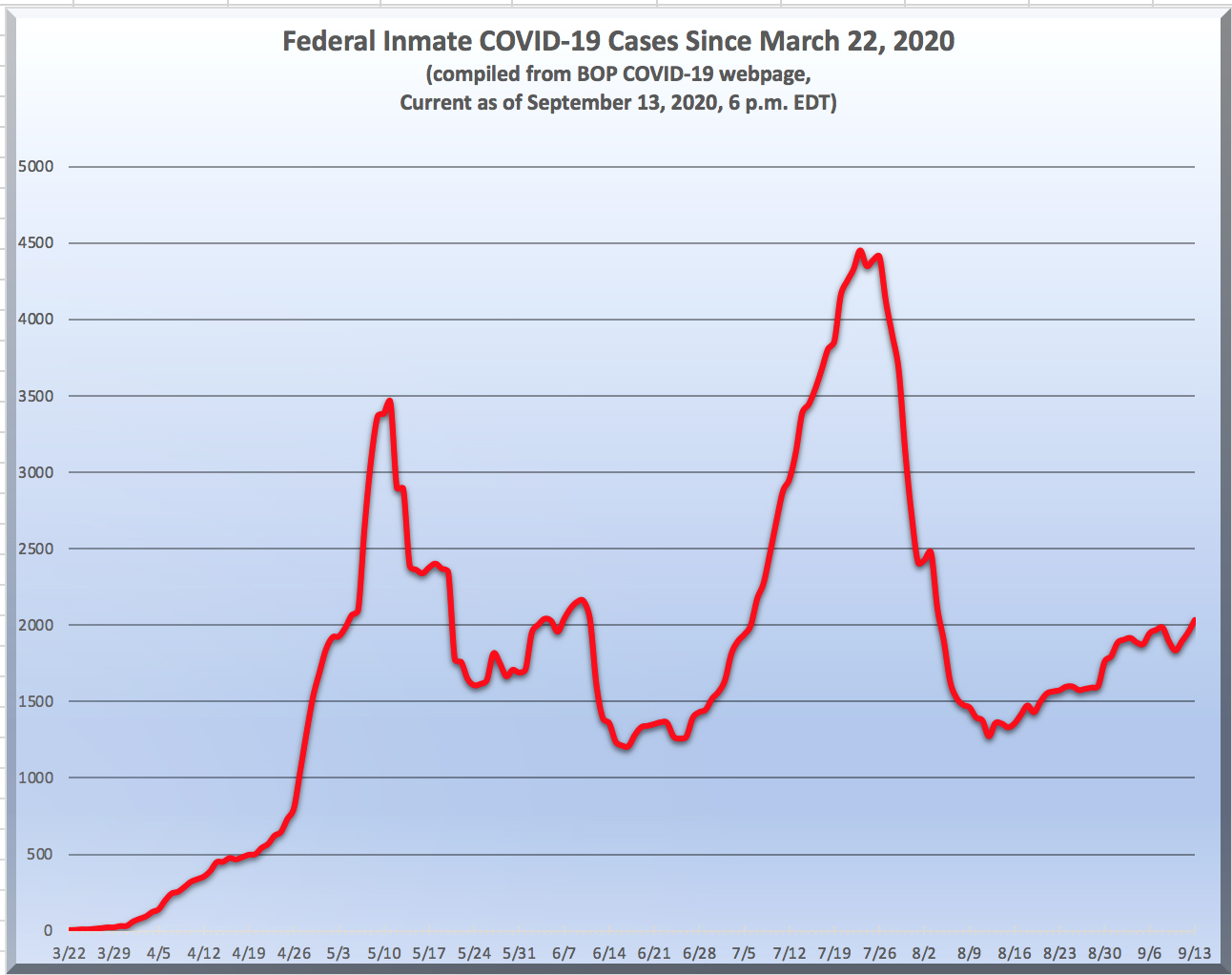We post news and comment on federal criminal justice issues, focused primarily on trial and post-conviction matters, legislative initiatives, and sentencing issues.

THEY EXPECT SOME RESULTS
Sometime in the next few months, we should see Bureau of Prisons Director Colette S. Peters make the 10-minute walk from her office to Capitol Hill for an oversight hearing.
 When she first appeared in front of the Senate Committee on the Judiciary two years ago, it was a love-fest. Last September, after she had been at the helm for a year, she received a decidedly cooler reception, with Senator Jon Ossoff (D-GA) warning her that “you’ve now been in the post for about a year and Congress expects results.”
When she first appeared in front of the Senate Committee on the Judiciary two years ago, it was a love-fest. Last September, after she had been at the helm for a year, she received a decidedly cooler reception, with Senator Jon Ossoff (D-GA) warning her that “you’ve now been in the post for about a year and Congress expects results.”
We now have results. And they’re not all that good. The next oversight hearing ought to be a doozy.
In the FCI Dublin class action lawsuit last Thursday, US District Court Judge Yvonne Gonzalez Rogers (N.D. CA) denied a BOP motion to dismiss the case, saying she doesn’t believe Bureau platitudes that that it is now providing former Dublin prisoners with “adequate care” at prisons across the country.
“The Court is not so easily persuaded,” a skeptical Judge Gonzalez Rogers wrote. “The notion that the constitutional injuries alleged by FCI Dublin’s AICs (adults in custody) were comprehensively remedied by the facility’s closure strains credulity.”
The BOP offered a one-page declaration from Deputy Director William Lothrop that asserted, among other things, that “the BOP is able to presently care for its female AIC population and anticipates the ability to meet their future needs without requiring the use of the FCI Dublin facility.” But when the Court ordered Lothrop to testify, it turned out that he did not know “the details of this case… He was not aware, for instance, of the many outstanding issues… includ[ing] but… not limited to (i) 126 medical alerts; (ii) 63 Medication Assisted Treatment alerts; (iii) 30 mental health alerts; and (iv) 137 unprocessed property claims. This lack of awareness directly undermines his statement that ‘[t]he BOP is able to presently care for its female AIC population.’”
 What’s more, the Judge wrote, “the BOP has not memorialized its alleged decision not to re-open FCI Dublin to house women AICs anywhere outside of Lothrop’s declaration… Thus nothing stops BOP from reversing course in the future, should this case be dismissed as moot.” Also, the Deputy Director admitted that all other BOP facilities are understaffed, “yet the decision was made not to increase staffing prior to the transfer” of the FCI Dublin prisoners.
What’s more, the Judge wrote, “the BOP has not memorialized its alleged decision not to re-open FCI Dublin to house women AICs anywhere outside of Lothrop’s declaration… Thus nothing stops BOP from reversing course in the future, should this case be dismissed as moot.” Also, the Deputy Director admitted that all other BOP facilities are understaffed, “yet the decision was made not to increase staffing prior to the transfer” of the FCI Dublin prisoners.
“This directly undermines Deputy Director’s statement that ‘the BOP is able to presently care for its female AIC population and anticipates the ability to meet their future needs without requiring the use of the FCI Dublin facility,’” the Court observed. “It cannot simultaneously be true that (i) no BOP facility is fully staffed, and (ii) the BOP is aware of no barriers to providing the IACs in their custody with appropriate care.”
NPR reported last week that despite the Dept of Justice Inspector General’s and media reports on inadequate medical care at FCI Sheridan, the BOP is still failing to treat inmates for months on end and making a hash of recordkeeping, according to inmates. The BOP has responded that it “takes pride in protecting and securing individuals entrusted in our custody” and makes “every effort to ensure the physical, medical, and mental safety” of those individuals.”
On September 6th, Reason reported that “last week, at least seven women at [FCI Waseca] were sent to a local hospital for suspected drug overdoses, and incarcerated women and attorneys say the conditions inside are chaotic, filthy, and violent because of rampant abuse of the dangerous drug.”
The BOP confirmed that “[l]ast week, out of an abundance of caution, [FCI] Waseca sent seven incarcerated individuals exhibiting signs of drug use to a local hospital for additional evaluation. All were evaluated and returned the same day.”
“The [BOP] takes seriously our duty to protect the individuals entrusted in our custody,” a BOP spokesperson said, “as well as to keep correctional employees and the community safe, by maintaining a controlled environment that is secure and humane.”
Reason reported that 7 months ago, Catherine Sevcenko, senior counsel with the National Council for Incarcerated and Formerly Incarcerated Women and Girls, wrote to FCI Waseca administration “detailing accounts from inside the prison about women smoking K2 and vomiting, having diarrhea, seizures, and hallucinations. Users became aggressive and paranoid. Addiction and drug debts were leading to violence and theft.”
“Everyone who has reached out to us believes that someone will die, whether from overdose or being attacked, if things do not change quickly,” Sevcenko reportedly said.
The Waseca warden replied,
I would like to assure you that the Bureau of Prisons is committed to providing a safe and healthful environment for individuals in our custody, as well as our staff… The introduction and use of illicit substances within our facilities is prohibited and the prevention of such remains a priority to all Bureau staff. At FCI Waseca, procedures exist to prevent and detect the introduction of contraband into the facility, as well as to prevent and detect the use of illicit substances inside the facility.
Well, that’s a relief! Everything’s under control.
 Last week, a union representing FCI Thomson employees issued a press release reporting that a correctional officer had been exposed to what was believed to be amphetamines, and was revived with Narcan and hospitalized. Two weeks before, another Thomson CO reportedly was also exposed to drugs and had to be given Narcan and hospitalized.
Last week, a union representing FCI Thomson employees issued a press release reporting that a correctional officer had been exposed to what was believed to be amphetamines, and was revived with Narcan and hospitalized. Two weeks before, another Thomson CO reportedly was also exposed to drugs and had to be given Narcan and hospitalized.
The press release cited the death of a USP Atwater BOP officer last month from exposure to fentanyl, but authorities have not announced whether fentanyl was the cause of death, and as of Sep 6, the three defendants have not been charged with drug distribution leading to death.
KTVU, FCI Dublin women transfers continue to complain; judge denies BOP (September 6, 2024)
Order, California Coalition of Women Prisoners v BOP, ECF 385, Case No 4:23-cv-4155 (N.D. Cal., September 5, 2024)
NPR, 2 years and counting. Inmate says medical delays still plague federal prison in Oregon (September 1, 2024)
Reason, A Federal Prison Was Warned About Synthetic Marijuana. Then Inmates Started Overdosing (September 6, 2024)
AFGE 4070 Press Release, A Correctional Officer was exposed to what was believed to be amphetamines. The staff member was given Narcan before being transported to a local hospital. (September 2, 2024)
– Thomas L. Root














